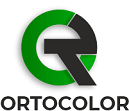Products
Iron oxide pigments
Iron oxide pigments are an inorganic material made from iron oxides. They are non-toxic, non-flammable and odorless. They are characterized by low cost, high content of iron oxide compounds, pure color, high dispersion, opacity, coloring ability, absence of abrasive impurities and easy dispersion. Used for painting concrete, gypsum and other construction mixtures. And also in production of paving slabs, a polymer sand tile, an artificial facing stone, paints, plastics, etc.

Titanium dioxide
Titanium dioxide is an effective whitening pigment. It is a white powder without odor and toxicity, with a wide range of protective properties, which makes the coating more resistant to weathering and chemicals. TiO2 is also a corrective element in creating a full range of colors. The more TiO2 is added, the whiter the final product. One of the most advantages is the impeccable opacity, which allows you to use raw materials.

Inorganic Pigments
Inorganic pigments are dry, free-flowing, fine-grained powder with a coloring and protective effect, derived from certain metals and oxides. light-resistant – do not burn out in the sun. They mix well with other pigments, heat-resistant – color and structure do not change at high temperatures, create an anti-corrosion effect, resistant to atmospheric and chemical factors, are heat-treated to obtain new shades.

Organic pigments
Organic pigments, unlike inorganic ones, do not have protective properties, they are purely decorative pigments. Bright, clean, saturated shades of organic pigments allow you to get a wide range of colors that can not be created using inorganic pigments. In contrast, in comparison with inorganic pigments, they have less coverage. Their coloring ability is mainly due to the absorption rather than light scattering.

Phthalocyanine pigments
Phthalocyanine pigments are a group of organic pigments of blue and green colors. Give products beautiful and clean shades. Characterized by high light fastness and heat resistance. Extremely resistant to chemicals – reducing agents, acids and alkalis. Used for the production of superconcentrates, inks, plastics. They are used in the textile industry and dyeing of artificial leather products, used for the manufacture of household chemicals and more.

Pearlescent pigments
Pearlescent pigments are natural or synthetic mica coated with titanium dioxide and metal oxides. Such pigments are designed to create the effect of translucency and gloss, which varies depending on the refraction of light rays. The size of the pigment particles affects the degree of gloss and coverage. Small particles have more coverage, but less shine. Large particles give more shine, but have less coverage.

Glitter
Glitter (decorative sequins) is a finely cut polymer film with a mirror coating and different colored layers to reflect light. They can be of any shape, color and particle size.
Types of glitters
ordinary – reflects light and flickers brightly
holographic – made of metallized film. A regular CD has a similar overflow effect
iridescent – made of non-metallic multilayer film. Has the effect of nacreous
fluorescent – bright shine is manifested under ultraviolet light

Fluorescent pigments
Fluorescent pigments are fine particles of transparent organic resins stained with photo active substances. The result is pigments of extremely bright, saturated colors that glow brightly under the influence of ultraviolet light sources, but do not accumulate it and do not give it away, so with the disappearance of direct light – dim.
Types of fluorescent pigments:
LNT – high-strength, transparent, fluorescent pigments, give transparent coatings
HT – for water-based systems
HP – made on the basis of thermosetting resin, for organ-based systems
HX is the most common series for thermoplastic polymers

Optical Brighteners
Optical bleach (fluorescent) is a material of organic origin, the main task of which is to give objects a snow-white color. This is due to the absorption of ultraviolet light and its conversion to blue, which compensates for the lack of linen. White materials acquire a high degree of whiteness, and colored – brightness and contrast.

Dyes
Dyes – materials of organic or synthetic origin, which have an intense color and serve as a coloring element. Used depending on the classification of chemical composition and purpose.
Types of dyes:
organosoluble dyes
acidic
direct
active dyes

